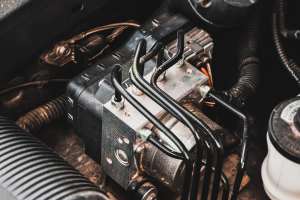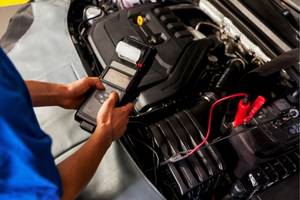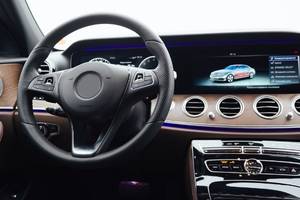Introduction
Owning a BMW is an entitlement and a joy, but it also comes with responsibilities, especially when it comes to maintenance and repairs. One of the important components you might have to deal with is the Engine Control Unit (ECU). The ECU, also known as the car's brain, plays a crucial role in managing engine functions. When it malfunctions, it can lead to various issues. In this guide, we will dive right into the specifics of BMW ECU repair, focusing on the importance of using original parts to maintain the quality and performance of your vehicle. Let's get started!
1. Identify the Problem with Your BMW ECU
Before you dive headfirst into the world of BMW ECU repair with original parts, it's essential to pinpoint what exactly is wrong. Is your BMW behaving like a rebellious teenager — stalling, misfiring, or showing a decrease in performance? Fear not, these are common signs that your ECU might be the culprit.
An ECU, or Engine Control Unit, is like the brain of your car. It controls the engine's various functions, and any issue here can cause your BMW to act a little off.
Step 1: Start with a Diagnostic Scan. This is the equivalent of a doctor's check-up for your car. It's a quick way to identify any potential issues with your ECU.
Step 2: Watch out for warning signs. Is your engine light on? Is your BMW not starting, or worse, stalling in the middle of nowhere? These could be signs of a faltering ECU.
Step 3: Check for any physical damage. If your car has gone through a waterlogged area or had a hard impact, the ECU could be damaged. Look for signs of water damage or physical trauma.
By identifying the problem with your ECU, you're already halfway through the bmw ecu repair with original parts process. Now, all that's left is to source the parts and get started on the repair. But more about that in the next section. Stay tuned!
2. Source Original BMW ECU Parts
Once you've identified the issue with your ECU, the next step is to get your hands on the right parts for your BMW ECU repair. Remember, when it comes to your BMW, it's like a gourmet meal — only the best ingredients will do. Here, those ingredients are original BMW ECU parts.
Why Opt for Original Parts?
Here's the thing about original parts — they're designed specifically for your car model. Just like a tailor-made suit, these parts will fit your vehicle perfectly, ensuring optimal performance. Plus, choosing original parts reduces the risk of causing further damage to your vehicle.
Where Can You Source Original BMW ECU Parts?
- Authorized BMW Dealers: The safest bet for getting original parts is to go directly to BMW authorized dealers. Yes, the price might be a bit steep, but the peace of mind and assurance of quality make it worth every penny.
- Online Marketplaces: Websites like eBay or Amazon often have original BMW ECU parts available. Be cautious, though — make sure the seller is reputable to avoid counterfeit parts.
- Auto Parts Stores: These stores usually carry a variety of original parts for different car models, including BMW. Keep in mind, however, that not all stores may carry ECU parts specifically.
Remember, the success of your BMW ECU repair hinges on the quality of the parts you use. So, opt for original BMW ECU parts — your car will thank you for it!
And speaking of thanks, don't forget to give yourself a pat on the back! You've successfully navigated through the first two steps of BMW ECU repair with original parts. Up next, we'll tackle the actual repair process. Buckle up!

3. Step-by-Step Process for BMW ECU Repair
Alright, now that you've got your original BMW ECU parts lined up, it's time to roll up your sleeves and tackle the repair itself. Don't worry, we'll walk you through each step. Remember — it's not a sprint, it's a marathon. And with a little patience, you'll cross the finish line.
Step 1: Disconnect the Battery
First things first, disconnect the negative terminal of your car's battery. This is a safety measure to prevent any electrical shocks during your BMW ECU repair. Safety first, right?
Step 2: Locate the ECU
Next, locate the ECU in your BMW. This might vary depending on the model, but it's usually under the hood or the dashboard. If you're having trouble finding it, refer to your owner's manual.
Step 3: Remove the ECU
Now, you'll need to carefully remove the ECU. It's typically secured with screws or clips. Be gentle, and remember: force is not your friend here.
Step 4: Replace the Faulty Parts
With the ECU removed, you can now replace the faulty part with your newly sourced original BMW ECU part. Again, patience is key. Make sure the new part fits perfectly before proceeding.
Step 5: Reinstall the ECU
Now that the faulty part is replaced, reinstall the ECU in its designated spot. Just like you removed it, replace any screws or clips that hold the ECU in place.
Step 6: Reconnect the Battery
Finally, reconnect the battery, and start your car to check if the ECU repair was successful. Fingers crossed!
Congratulations! You've just completed your BMW ECU repair with original parts! But, the journey doesn't end here. Up next, we'll share some best practices to ensure your repair process is as smooth as a BMW's ride. Onwards we go!
4. Best Practices for BMW ECU Repair
Now, let's discuss some handy tips and tricks that will help you in the long run. Remember, a good repair job isn't just about fixing the problem — it's about making sure it doesn't happen again.
Practice Safety
This can't be stressed enough: always disconnect the battery before starting your BMW ECU repair. Dealing with electrical components can be risky, and you don't want any nasty shocks. Also, be mindful of where you're working — a clean, dry, and well-lit area is your best friend.
Use Original Parts
When it comes to BMW ECU repair, always opt for original parts. They may cost a little more, but they're designed specifically for your car and will ensure optimal performance. Plus, they're usually backed by a warranty, which is always a win.
Take Your Time
Don't rush the repair process. It's easy to make mistakes when you're in a hurry. So, take your time, double-check everything, and ensure each component fits as it should.
Stay Organized
Keep track of all the screws, clips, and other small parts you remove during the repair. A simple trick is to place them in a tray or a magnetic parts holder. Trust us; you'll thank yourself later.
Seek Professional Help When Needed
If you encounter issues during your BMW ECU repair with original parts, don't hesitate to seek professional help. Remember, it's better to ask for help than to make a costly mistake.
There you have it, folks! Follow these best practices, and you'll not only repair your BMW ECU successfully but also prevent future issues. Now, let's move on to some common troubleshooting tips. Ready? Let's dive in!
5. Troubleshooting Common BMW ECU Repair Issues
Even with the best intentions and practices, things may not go as smoothly as expected. Don't worry, though. We've compiled a list of common issues faced during BMW ECU repair with original parts and how to fix them.
Inconsistent Power Supply
Experiencing intermittent power supply to your ECU? It might be due to a weak battery or faulty wiring. Check your battery's health and the condition of the wiring. If the problem persists, it's best to consult a professional.
ECU Not Responding
If your ECU isn't responding after the repair, the issue could be with the installation. Ensure all the connections are secure and the ECU is installed correctly. If that doesn't solve the problem, the ECU might be faulty and could need a replacement.
Unusual Engine Behavior
If your engine behaves weirdly after the ECU repair, it's possible that the ECU isn't communicating effectively with the engine. This could be due to faulty original parts or incorrect installation. Double-check all the parts and their installation.
Warning Lights on Dashboard
Are warning lights on your dashboard constantly lit? The ECU might not have been reset after the repair. Resetting it should solve the issue. If it doesn't, consult a professional.
Car Doesn't Start
Is your car refusing to start post-repair? It could be a symptom of a malfunctioning ECU. Check all connections and the condition of the ECU. If you can't find a solution, it's time to seek professional help.
Remember, troubleshooting is part of the process. Don't get frustrated if you run into problems. With a little patience and practice, you'll get the hang of BMW ECU repair with original parts in no time. And if things get too tricky, don't hesitate to reach out to a professional. They're there to help. After all, we all need a helping hand sometimes, don't we?
Conclusion
Repairing your BMW's ECU with original parts is not only a matter of maintaining performance but also maintaining the honor and value of your vehicle. By following the detailed steps and best practices outlined in this guide, you can confidently tackle ECU issues and make sure your BMW runs smoothly. Remember, using original parts guarantees compatibility and reliability, helping you avoid further complexities. Should you face any difficulties, professional assistance is always available to make sure your repair process is successful. Keep your BMW in top shape and enjoy the unparalleled driving experience it offers.
FAQs on
BMW ECU Repair Using Original Parts: Step-by-Step Process
-
1. Why should I use original parts for my BMW ECU repair?
Ans.
Using original parts makes sure that the components are particularly designed for your vehicle, guaranteeing ideal performance and reducing the risk of further damage. Original parts also come with a warranty, providing additional peace of mind.
-
2. How do I identify if my BMW ECU needs repair?
Ans.
Some common signs include the engine light turning on, the car stalling or misfiring, and a noticeable decrease in performance. A diagnostic scan can help find the issue precisely.
-
3. Where can I purchase original BMW ECU parts?
Ans.
Original BMW ECU parts can be sourced from authorized BMW dealers, reputable online marketplaces like Amazon or eBay, and specialized auto parts stores. Always make sure the seller is reputable to avoid any fake parts.
-
4. Can I repair the BMW ECU myself, or do I need a professional?
Ans.
While it is possible to repair the ECU yourself by following detailed guides, it's important to be cautious and patient. If you face any difficulties or are not sure about the process, seeking professional help is recommended to prevent costly mistakes.
-
5. What safety measures should I take during the ECU repair?
Ans.
Always disconnect the battery before starting the repair to prevent electrical shocks. Work in a clean, dry, and well-lit area, and use tools carefully to avoid damaging the ECU or other components.
-
6. What should I do if my car doesn't start after an ECU repair?
Ans.
If your car doesn't start after-repair, check all connections and make sure the ECU is properly installed. If the issue continues, the ECU might be faulty, or there could be another underlying problem. In such cases, consulting a professional is recommended.



